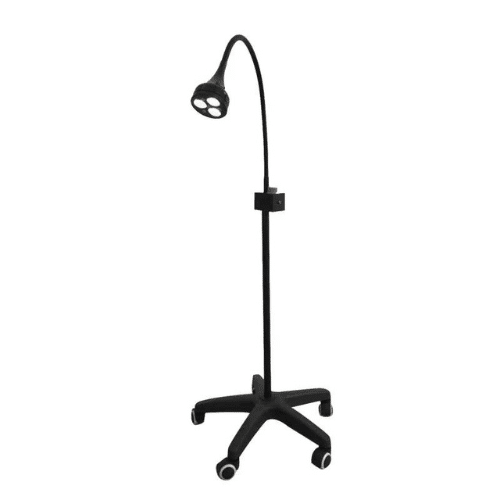
Reliable lighting equipment that doesn't generate glare, shadows, or other hindering effects is necessary for a thorough skin inspection. Lighting systems for examination rooms should offer a balance of cozy ambient and task lighting.
The choice of the proper equipment is very difficult to work due to the variety of lighting devices and the wide range of technical and design requirements. Proper interpretation of the data is frequently challenging, even though the manufacturers provide thorough information about the technical parameters of the equipment.
Examination lights highlight particular portions of a patient's body during diagnostic procedures and general examinations. The visible spectrum is where these lights are meant to produce their useful energy primarily. Small surgical procedures such as minor cosmetic surgery use examination lamps.
The lowest color temperature is 4,000 K.
95 is the bare minimum CRI (color rendering index).
LEDs should last at least 40,000 hours.
Adjustable floor-to-light height should have a minimum range of 1.1 to 1.75 meters.
An on/off switch.
Power specifications: 100–240 volts at 50–60 Hz.
With a low center of gravity and a heavy base.
LED lights are arranged in a cluster on a single light head.
Between the lamp and the base stand, articulating arm.
Five anti-static swivel castors on a base are arranged in a star shape.
The brakes have been installed on at least two castors.
Fixed focus field of view of at least 14 cm.
60,000 minimum lux lighting at 0.5 meters.
Examining a patient requires examination lamps, which are significant equipment that general practitioners can use in clinics, nurses in large hospitals, dermatologists, gynecologists, and a variety of other healthcare specialists. They are medical-grade lights mounted on walls, ceilings, portable, movable stands, or any other suitable surface to fit any setting. There is a need for specialized lighting if one wants to light a surgical theater, exam room, dentist chair, or veterinary clinic.
Medical examination lights, surgical procedure lights, and other specialist medical lights have certain characteristics needed to carry out delicate procedures like surgery and examinations. Conventional lighting is inadequate for medical practice due to its color temperature, ambiance heat, and propensity to cast shadows.